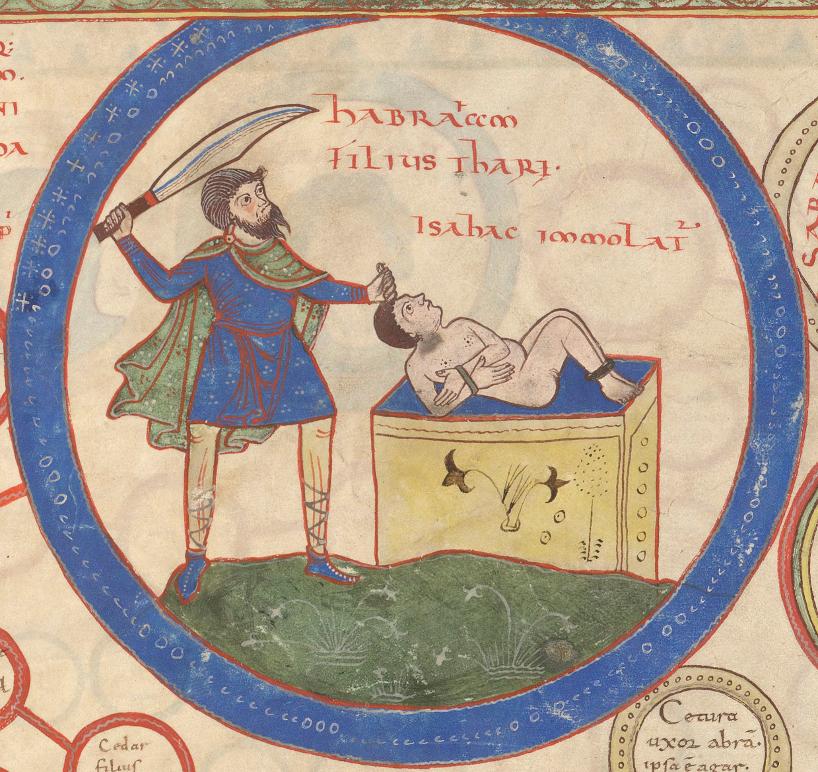Amazon Audible Gift Memberships

Shop Amazon - Create an Amazon Baby Registry
Illustration from the:
Beatus de Saint-Sever
Commentary on the Apocalypse by Beatus of Liébana,
copy from before 1072AD, Southwestern France.
Folio 8. Abraham Sacrificing Isaac

Referenced as figure 563 in The military technology of classical Islam by D Nicolle
563. Manuscript,"Sacrifice of Isaac," Beatus of St Sever, 1028-1072 AD, south French, Bib. Nat., Nis. Lat. 8878, f. 8, Paris (War).
p40 Vol. 1 Whether the heavy European falchion, perhaps first seen in 11th century southern France (Fig. 563), was an independent development or reflected a merging of these two traditions from north and south, remains unclear. There is, however, little doubt that comparable single-edged swords of various lengths continued to be used throughout most of the Muslim world in the 12th and 13th centuries (Figs.
177E-F, 178A-B, 250, 294, 401, 591, 609I, and 641).
Previous: Beatus Saint Sever, Darius lies sleepless Next: Beatus Saint Sever, The Four Horsemen
Back to Beatus de Saint-Sever, Commentary on the Apocalypse by Beatus of Liébana, 1028-1072AD, Southwestern France. BnF Manuscript Latin 8878

